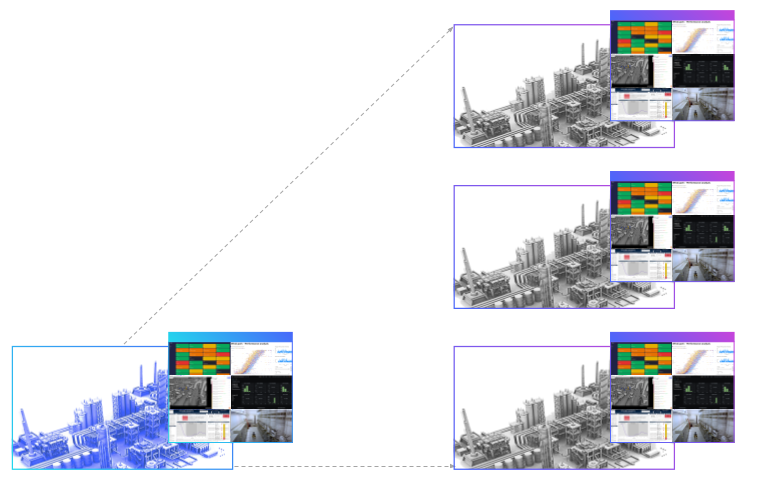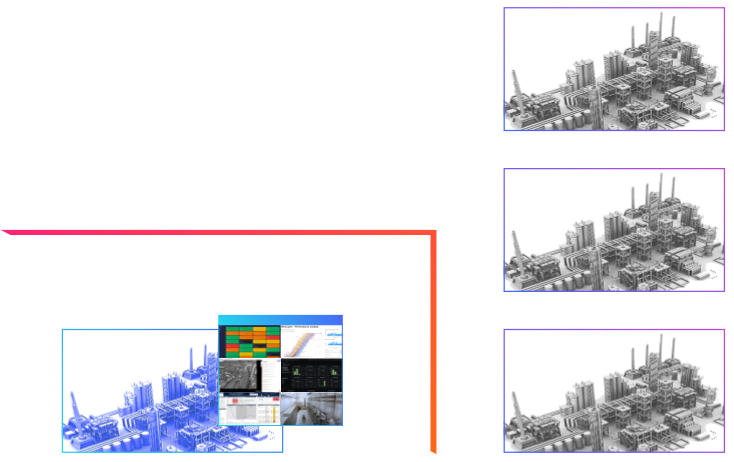Herein lies the challenge, while many manufacturers have successfully fostered lighthouse sites, very few have been able to replicate this success across their other production sites.
To define a lighthouse site, these are the ones that are first to install the newest technologies, often have teams with unique technological expertise, and are likely the most productive and agile of all your production sites. This lighthouse concept is best recognized by the World Economic Forum, which started the Global Lighthouse Network in 2018 and currently recognizes 90 manufacturing sites worldwide for “applying Fourth Industrial Revolution technologies to increase efficiency and productivity, along with environmental stewardship.”
The purpose of these lighthouse sites are to act as the guiding model for other production sites, providing a wave of innovation to address use cases that will increase productivity, improve quality, reduce energy and water consumption, and much more. The problem is that lighthouse facilities on average only account for 10-15% of production volume, and manufacturers are struggling to replicate this success to the significantly outstanding 85-90% of their production. In one instance, a materials manufacturer was so bold to admit that their lighthouse facility was built-up over a period of 15 years, and their biggest struggle today is bringing this success to their other sites.
Read also: I already have an MES. Why do I need an Industrial DataOps platform?
Why aren't lighthouses scaling?

At the highest level, scaling from your lighthouse sites to other production facilities may not appear to be a significant risk, as these sites likely manufacture the same or similar products. But looking one level deeper, 3 key differences emerge:

Lighthouses are more digitally mature
They are likely to have newer, smarter equipment, more connectivity, and more IoT devices. These sites have more data, it can be integrated easily, and the data is cleaner and already in a prepared state to support new use cases. Because these sites are more mature, they avoid many of the data integration, access, and connectivity challenges of older facilities. To put this into context, your lighthouse site may have already upgraded analog gauges with wireless sensors needed for an asset management use case. Older sites may still have analog gauges and could upgrade to new devices or consider using a different solution such as computer vision to turn analog gauges into time series data. Your other production sites may have requirements that your lighthouse sites do not.

Lighthouses are more homogeneous
Especially if your lighthouse site was constructed recently, many projects will have vertical integration across a couple of select vendors. This means solutions at your lighthouse can be tightly integrated, but this is presumably not reflective of your other production facilities. Other sites likely have a different variety of data sources (e.g. historians, MES) with inconsistent naming conventions in multiple languages. In addition, these sites were built across several generations and some may have come from acquisitions.

Lighthouses have more expertise
Digital teams helping build your lighthouse often have highly technical skill sets that would not be easy to replicate at other sites. In addition, many of their successful projects required notable customization that could not be easily replicated at sites without similar systems. These experts also do not have the bandwidth to learn and maintain solutions across the many varieties of systems mentioned above.
While this sounds bleak, the good news is we are not about to head towards a never-ending, standardization and modernization project. In fact, quite the opposite.
Learn more: The top digitalization trends and opportunities changing the manufacturing industry
The path forward: Avoiding a Lighthouse Island

If our goal is to ensure that your lighthouse success can be carried forward to other production sites, here are a couple of ideas to consider:

Embrace an open industrial ecosystem
An open industrial ecosystem can connect many data types (e.g. time series, documents, ERP, 3D, etc.) from many different sources. Open APIs and SDKs must also be available to share data with applications and solutions your organization has already adopted. Finally, data must be organized in a way that is easy to access for data and non-data experts. This can help overcome the wide variety of source systems and is a core concept of Industrial Data Operations.

From monolith to composable architectures
Instead of trying to build and maintain the perfect solution, add more composability to your architecture to increase your agility and response to change. One element of this approach is to add a semantic layer that can abstract the data from the source systems. This will increase the efficiency of your digital team as they can scale solutions without needing to intimately learn about every source system. New solutions must also fit into the existing architecture without disruption.

Identify ambitious sites with moderate digital maturity for PoCs
Due to their more modern and homogeneous architecture, lighthouse sites have the highest likelihood for a successful PoC and may already be your most efficient site. We see many older, moderately mature sites with very low-hanging fruit for use cases like reducing scrap or improving energy efficiency. Projects at these sites are more of a challenge but likely to be more reflective of the potential impact of new solutions across your organization.


